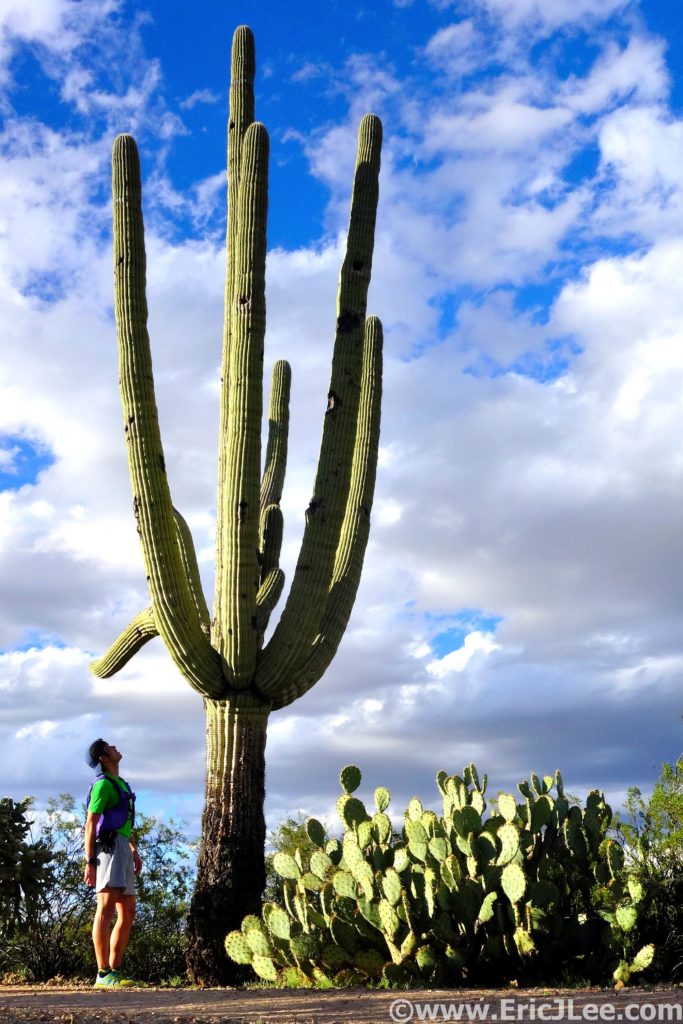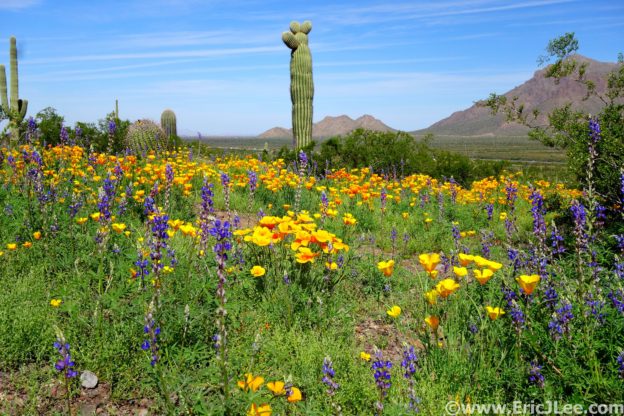Saguaro cacti, cholla, barrel cacti, prickly pear cacti, ocotillo, catclaw, yucca….there are a long list of things in the desert that are just looking to stab, scratch and tear at you. Our lesson learned, just don’t touch anything and you should be good.
The winter of 2018/2019 has been great for skiing, but it’s also seen most of the trails in my home town of Boulder covered with snow/ice and temperatures just cold enough that things have never quite thawed out (which they normally do). In need of a little desert therapy I booked a quick weekend get away to Phoenix/Tucson. This would also give me a chance to knock out another one of my National Park ultra marathons, Saguaro National Park, which borders right up to the city of Tucson. As I started researching routes in the park I was astounded to realize that the park covered a huge diversity of ecosystems; from the desert lowlands covered in its namesake Saguaro cacti, through pinyon and juniper forests to the summit of 8666ft tall Mica Mountain complete with snow and ponderosa pines. Thanks to a little local insight from trail guru Benedict Dugger and the Tucson Trail Runners group I mapped out what looked to be a spectacular 38mile Figure-8 loop that covered a large portion of Saguaro East. A last minute surprise found me able to convince fellow Colorado runner Helen Cospolich to join me for the adventure.
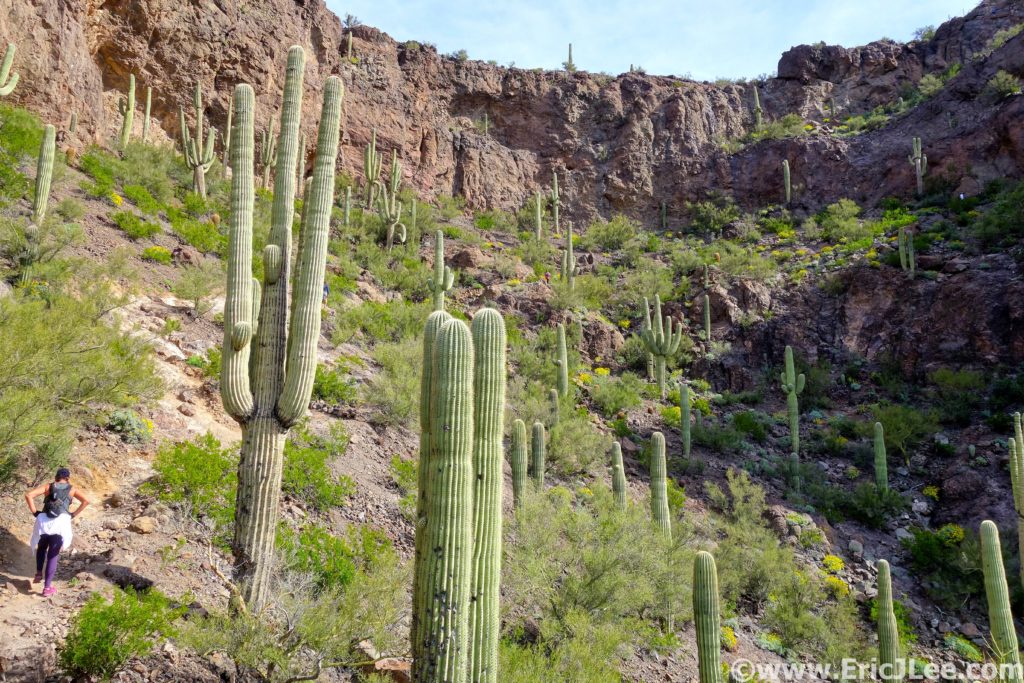
I flew out to Phoenix first thing Saturday morning and hit the ground running…literally. I grabbed Helen from her hotel and we headed straight for Picacho Peak State Park for a little warmup jog. The park was crowded, but we were in for a very special treat, as the winter’s unusually high precipitation had turned the park into a carpet of golden poppies and lavender lupine. We spent almost as much time taking photos as hiking and running. When the desert blooms it’s a truly spectacular sight, as the entirety of the landscape turns a vibrant green and wildflowers mingle with spiny succulents. After our morning tour I couldn’t help but head out for an afternoon run up Wasson Peak in West Saguaro National Park. It felt soooo good to simply run on trails again. The colors in the park weren’t peaking to the same level as Picacho Peak, but beautiful displays of wildflowers and smooth flowing single track made for a wonderful loop. Then it was back to the hotel to plot and scheme for the big adventure the following morning.
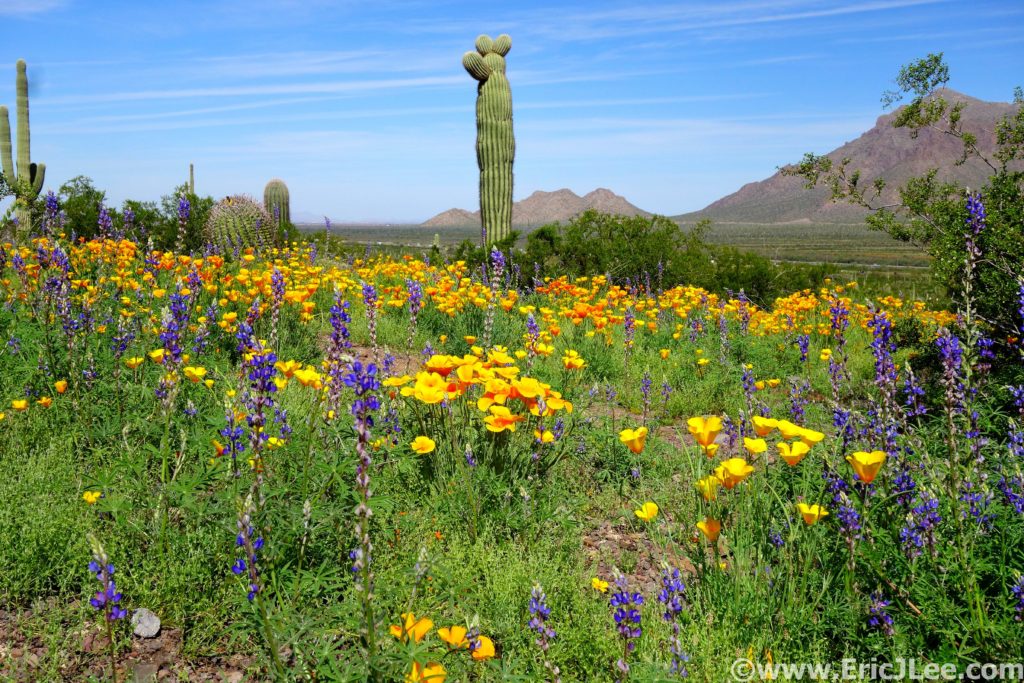
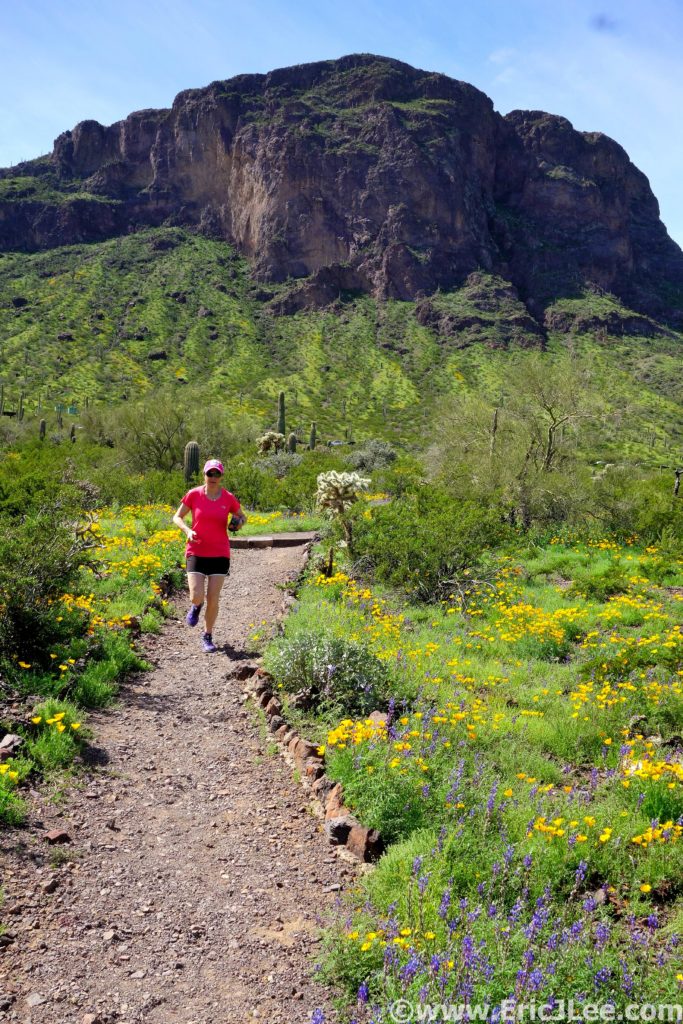
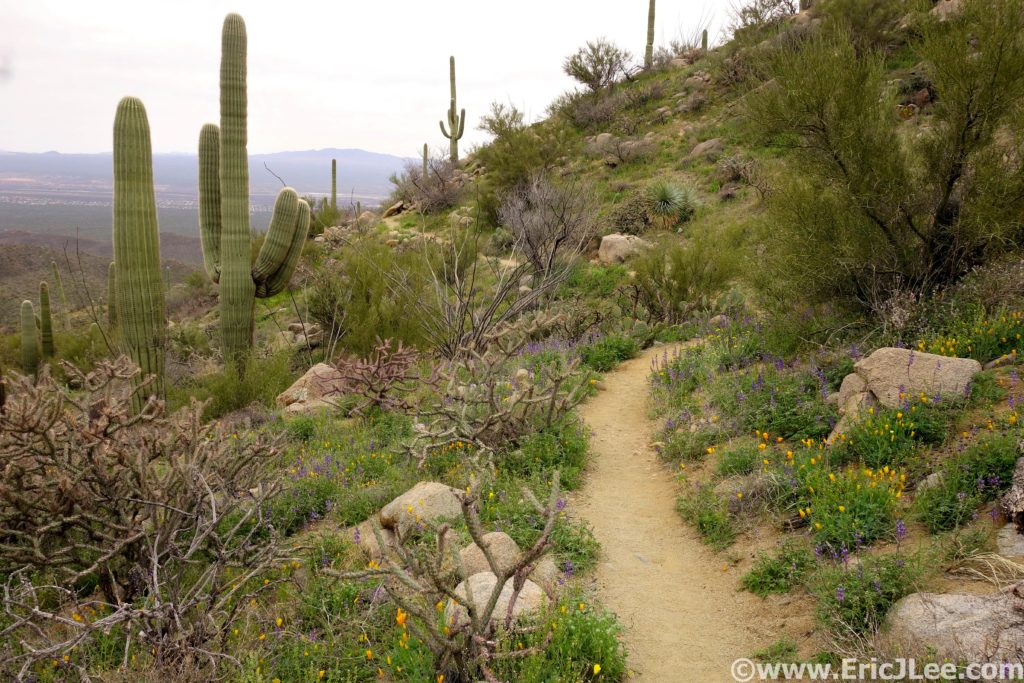
Sunday morning (3/10/19) Helen and I set out from the Broadway trailhead in the NW corner of the park, cruising our way through a network of trails, surrounded by giant Saguaro, crossing flowing washes (water!) and just ambling our way up to the Carillo and Three Tanks trails (3.2mi). Then the climbing started, up into the foothills of Saguaro we went. The trails were beautifully runnable, lined with an assortment of desert succulents and fields of greenery surrounding the babbling creek that was filling the desert with life. As we made our way up the Three Tanks trail and onto Douglas Springs the cacti gave way to rolling grasslands dotted with pinyon and juniper, slowly transitioning to ponderosa pine forest as we passed the Douglas Springs campground (10.2mi +1mi of detours).
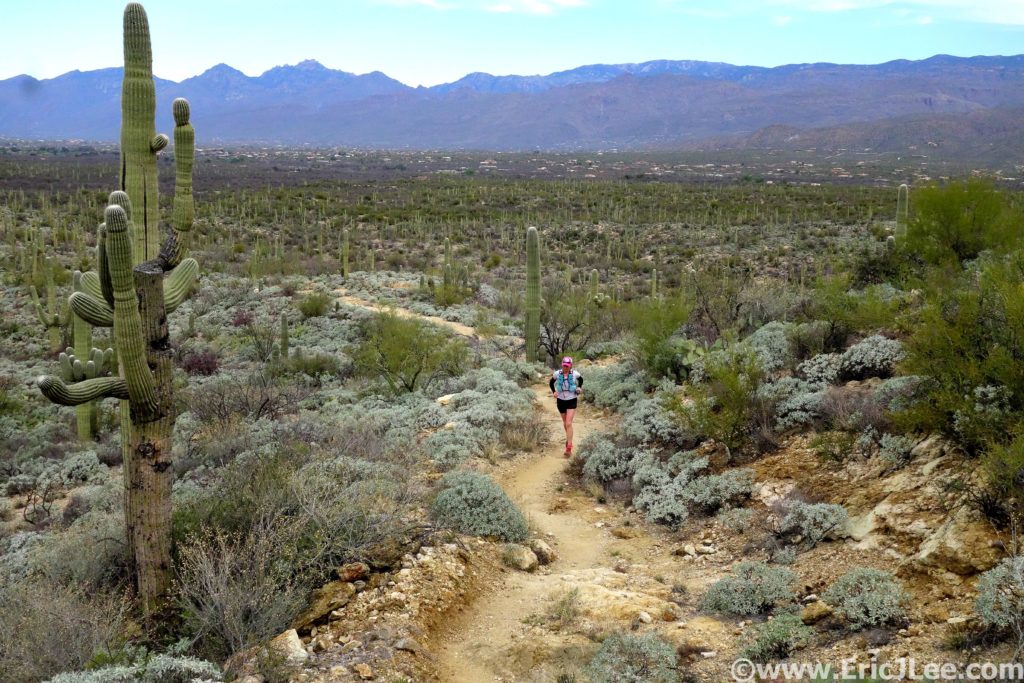
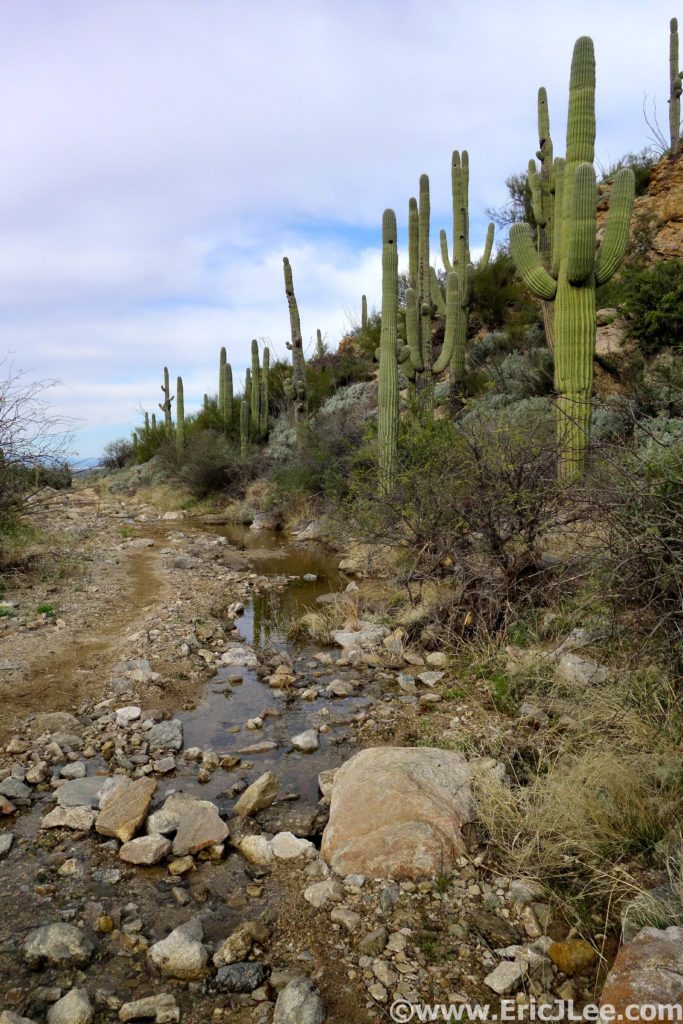
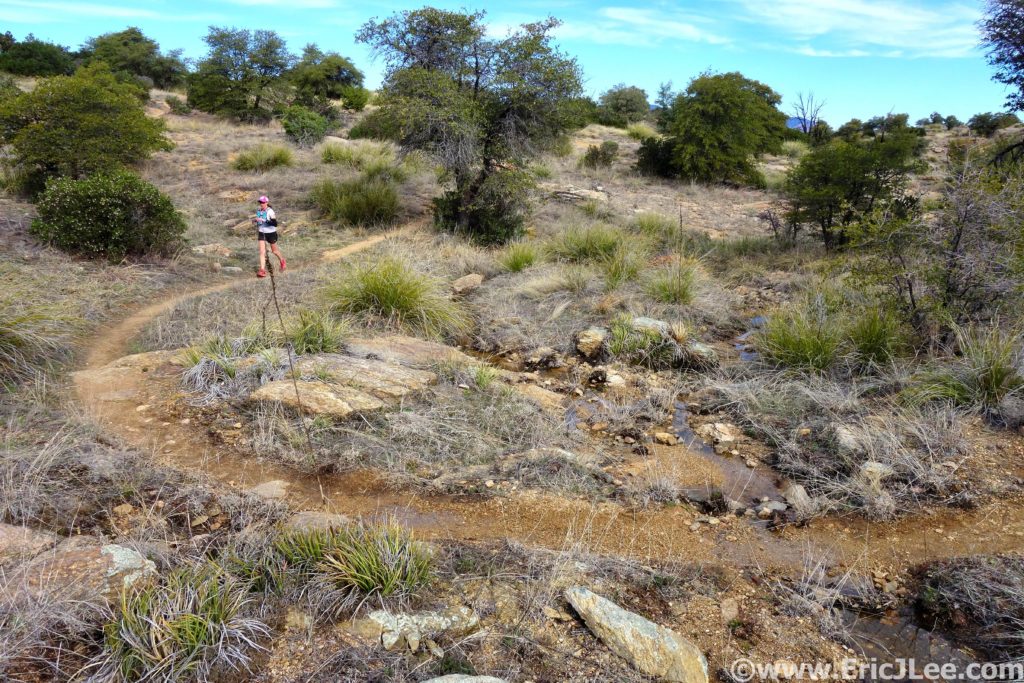
Here’s where the real climb began, 1400ft over the next few miles on a somewhat overgrown trail covered in manzanita and catclaw (ouch!) to the 6100ft Cowhead Saddle. This would be the middle of the Figure-8, and the next section was all business. The trail grinds its way up through ponderosa pine forest, passing jagged rock out croppings, and expansive views of the Sonora desert surrounding the mountains on all sides. The wind was really starting to whip through the trees, and boy was it chilly. Helen, opted to turn back and cut it a bit shorter (the trip was promising to run longer than the mapped 38miles). Around 7500ft the snow began, just a few small patches at first, but as I neared the summit of Mica Mountain I found myself more often on snow than not. Thankfully the tracks were easy to follow and the snow held my weight, soon I found myself atop 8666ft Mica Mountain (17.3mi +1.9mi of detours). There weren’t any views to speak of unfortunately as the summit was densely wooded, so I jogged on down the Mica Mountain trail toward Manning Camp.
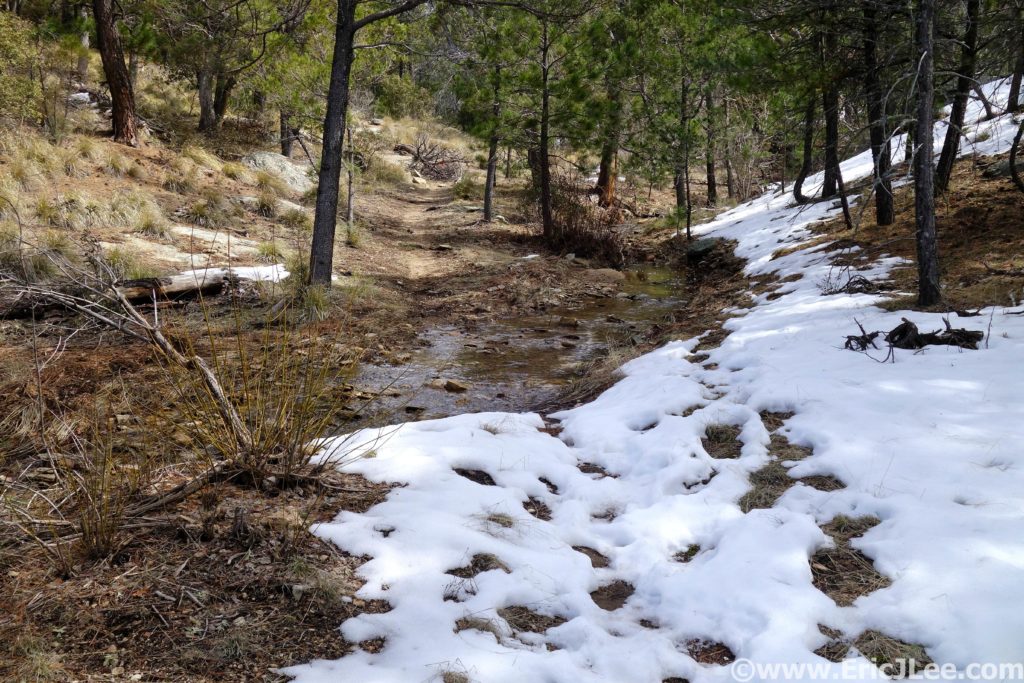
I followed the beautifully clear Chimenea creek down the mountain (refilled water) through now slushy snow to the cabin at Manning Camp, then on down down down the Manning Camp trail to Grass Shack Camp (23.6mi +1.9mi of detours). Trail was fun and technical as it zig zagged its way down the steep hillside back into more arid desert terrain. I washed off in the creek at Grass Shack camp and started the climb back up to Cowhead Saddle and Tanque Verde Peak. The temps were cool and the trail pleasant, but the miles and elevation were starting to take their toll, my poor road legs definitely weren’t in shape for this. The first stage of the climb to Cowhead Saddle went by quickly, but the rolling climb up to the summit of the Tanque Verde ridge was a grind. I felt like I was moving in slow motion but, finally I hit Tanque Verde peak (28.1mi +1.9mi of detours), a bit exhausted, but excited that I was done with most of the uphill, downhill running has always been my thing.
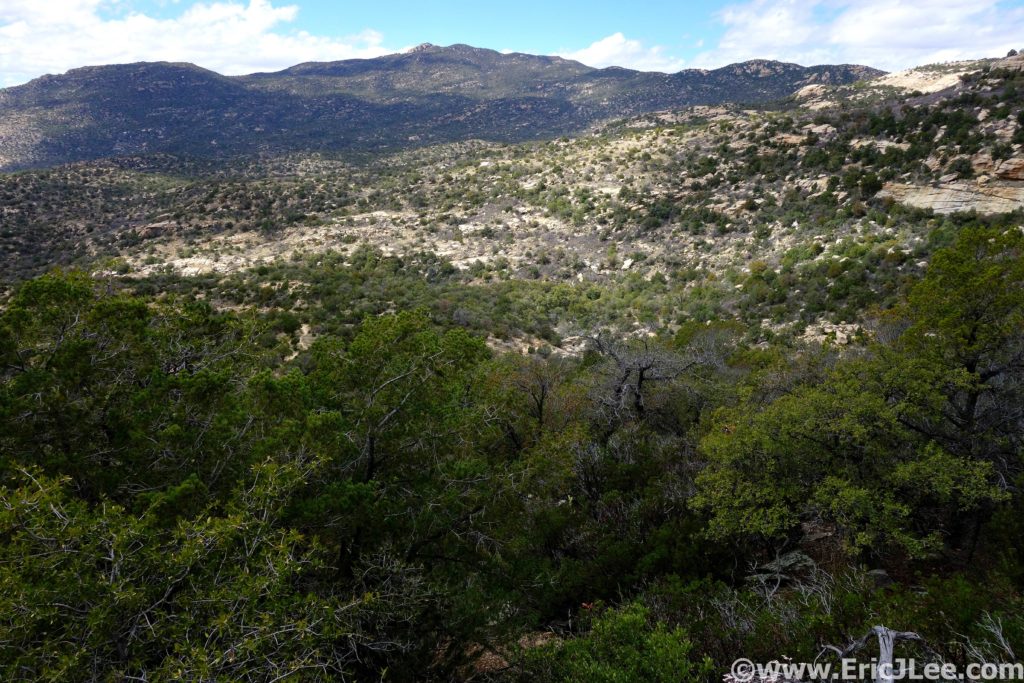
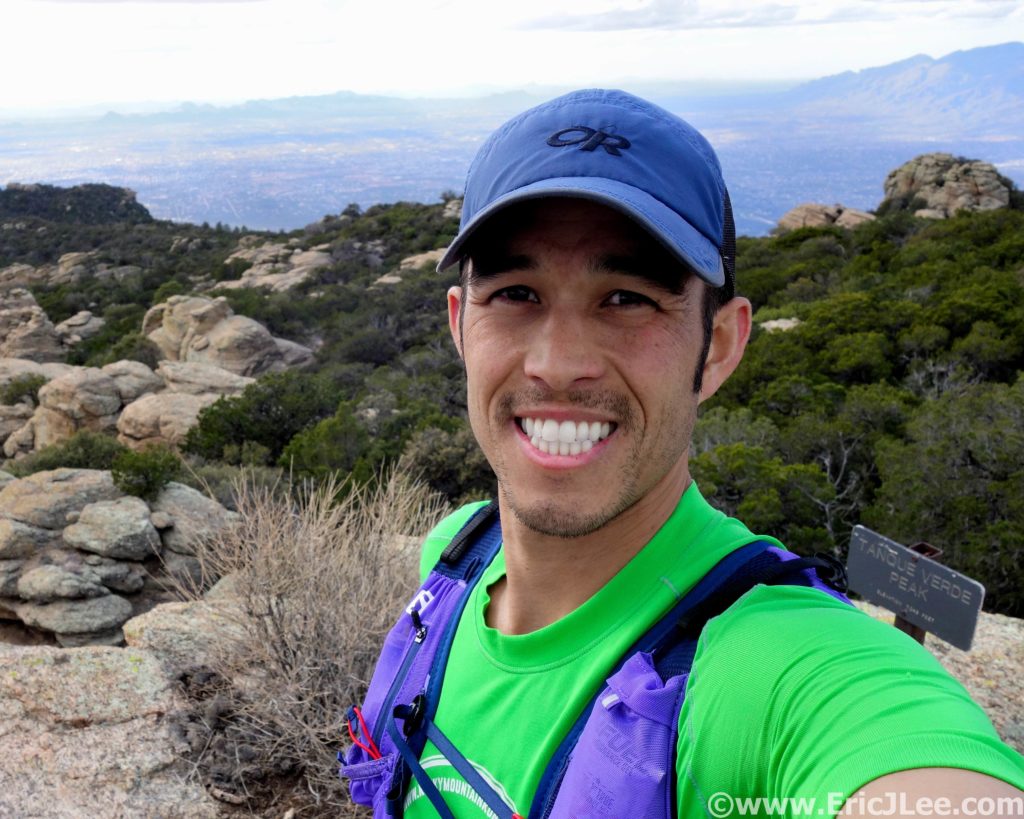
The descent down Tanque Verde peak was long and far more technical than I’d expected, rocky enough to slow the pace, many sharp turns that took one out of any rhythm, and the ever present sharp pointy desert flora threatening to impale one if you happened to stray from the trail even just a little bit. The miles were starting to drag on, but Tucson was slowly getting closer. Past Juniper Camp, and back into the desert, which was bursting with greenery and life, at last I saw the parking lot marking the 5mile to go point of the run (36.7mi +1.9mi of detours). Back down in the desert the afternoon sunlight cast beautiful shadows across the landscape, ocotillo were blooming and the massive Saguaro towered all around. I set out to run every step of that final 5miles across the Cactus Forest trail. Even though I was moving pretty well, the miles seemed to move by sooo slowly. When I finally hit the 2mi to go road crossing I pushed my legs a bit, crushing some 8:30 miles (ha!), and collapsing back at the trailhead 10h59min after we’d set out that morning. Total stats were 43.75mi (1.9m of detours), 9300ft of elevation gain, high point 8666ft, low point 2713ft, lots of cacti seen and my 14th National Park Ultramarathon completed.
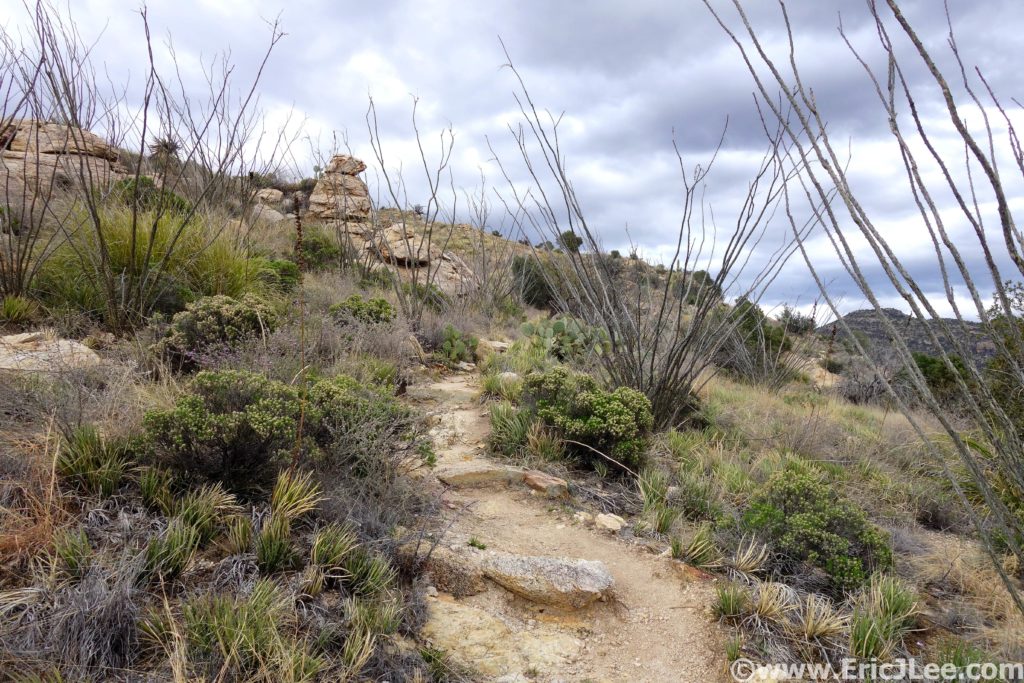

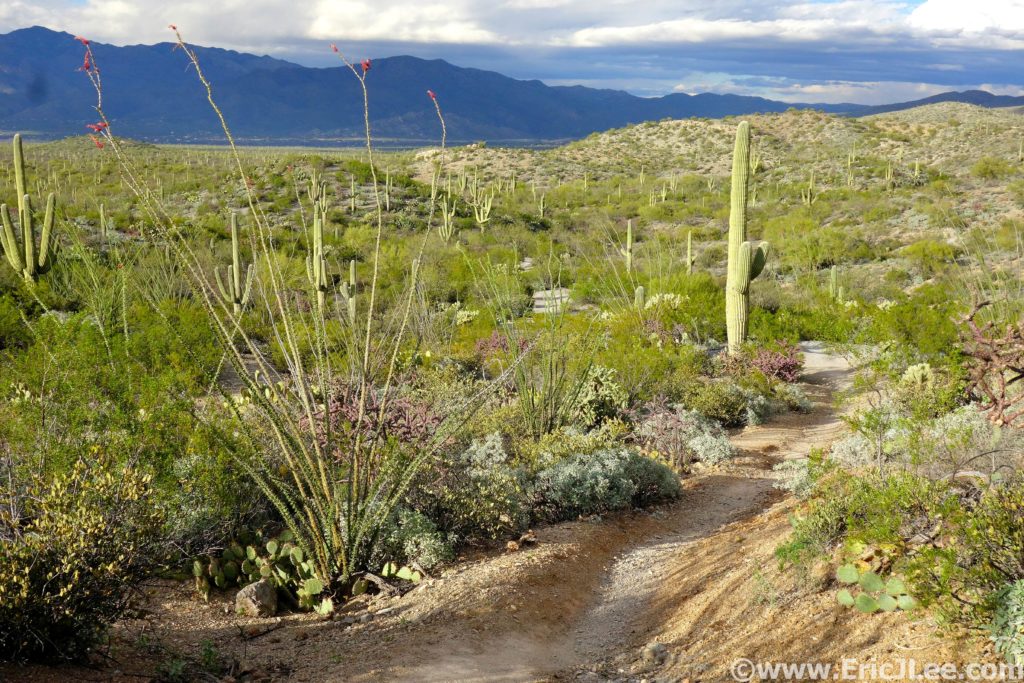
My run through Saguaro National park perfectly encapsulates why I started my National Park Ultra Project. It was a park I knew very little about other than it had giant Saguaro cacti and was a desert. I never expected to be climbing to the summit of a snow capped mountain, crossing numerous streams and rivers, get startled by white tale deer crashing through the brush, or taking photos of blooming poppies, lupine, prairie clover, evening primrose and globemallow. Our National Park system as a whole covers a huge array of beautiful places with unique ecosystems, but within a single park there is often so much more than its name sake implies for those willing to take their adventure beyond the visitor centers and paved nature trails. I can’t believe it’s taken me this long to explore the trails of Tucson and Phoenix, but I will definitely be back. It’s a perfect escape for those of us living in snowy winter climates, because who doesn’t need a little desert therapy once and a while (and good Mexican food!). Special thanks to Helen Cospolich for enduring my slightly longer than advertised run and keeping me company for many miles, Benedict and the Tucson Trail Runners for all the advice. To Vfuel for keeping me energized through all these long unsupported adventures, Adam Engel at Waldron’s Peak for helping fix my arm (still a work in progress) and Myriam Desrosiers massage for taking care of my aching muscles. Next up the Boston Marathon in April and Mammoth Caves National Park in early May! The adventure continues….
